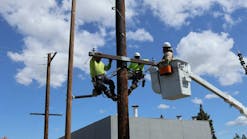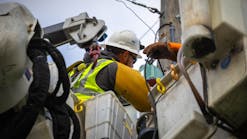Great River Energy Unlocks Hidden Transmission Capacity
With the growing demand for electricity globally, it is expected to nearly double over the next 30 years, according to the U.S. Energy Information Administration. As a result, electric utilities are looking for ways to meet this demand while also lowering operational costs and reducing emissions.
In October 2023, the U.S. Department of Energy announced it would be investing up to US$1.3 billion in three new interregional transmission lines aimed at adding 3.5 GW of grid capacity. However, building new power lines alone is not a viable solution for short-term needs. Electric utilities need to unlock more capacity from existing infrastructure.
Grid Optimization
Across both Europe and the U.S., utilities have significant untapped grid capacity they cannot access. As a result, many are embarking on seven- to 12-year projects to build additional infrastructure. However, they remain at a loss when it comes to meeting immediate demand.
Another way to unlock untapped capacity — and thereby decrease costs — is identifying and reducing sources of congestion in transmission systems. This is what Great River Energy set out to achieve when it partnered with Heimdall Power Inc. that specializes in grid optimization.
The electric power cooperative initiated talks with Heimdall Power when it learned how the Norway company had successfully increased grid capacity for European utilities like Swissgrid, Austrian Power Grid AG and TenneT by 30% before setting up U.S. operations in Houston, Texas.
Great River Energy conducted a two-year study to identify the sources of congestion with the highest financial impact on its operations. From there, the cooperative pinpointed one of its key lines as the most critical to address. This line became the site for its first pilot with Heimdall Power’s Neurons, which are sphere-shaped sensors that can be installed by autonomous drones on energized high-voltage power lines.
In September 2023, the cooperative installed four Neurons — also known colloquially as magic balls — to collect and measure real-time data on current, line angle, temperature and weather conditions. This data is processed by Heimdall Power’s software platform, which uses machine learning algorithms to understand the real-time capacity of power lines.
The Limiting Factor
The congestion in a given area typically follows the wind flow, which means there are no typical patterns in the daily load of a line. However, there is a silver lining. When power production from wind farms increases, the actual transmission capacity of nearby lines usually also significantly increases, considering the same wind that powers wind turbines will cool down the overhead lines used to transmit electricity. This enables the lines in question to transfer more power safely, given proper usage of dynamic line rating (DLR) technologies.
Before embarking on the project with one of its key lines, Great River Energy identified it was the conductor on this line that was the No. 1 capacity-limiting factor during summer congestion. Typically, when there is an increase in the load on a line, utilities will address other limiting components beyond the conductor. Great River Energy believed it could increase capacity on this very conductor by 25% without reaching the next limiting element of the line.
Line Capacity Forecasting
In preparation for the 2025 FERC Order 881 on ambient adjusted ratings, Great River Energy relied on DLR technology to evaluate other capacity-increasing approaches across its trans-mission system. In short, the technology involves optimizing transmission line ratings based on real-time data, rather than relying on static line ratings with no data input.
Prior to this, the cooperative used historical data and an estimated average temperature component to generate seasonal ratings. Based on Heimdall Power’s aggregated data from a wide number of countries, grid operators that adopt Heimdall DLR in their grid can increase their transmission capacity by more than 30% on average.
Real-Time Insights
To get the most out of Great River Energy’s move to DLR, Heimdall Power needed to provide it with the most accurate local data.
Nearly every power line today is operating without real-time insights into the strongest factors that influence power line capacity: hyper-local weather conditions, the temperature, and the current and angle of the high-voltage line. This results in utilities unknowingly leaving a significant portion of their grid’s full capacity untapped.
Data gathered by the Neurons and analyzed with the company’s software quickly revealed that the capacity gains Great River Energy could realize with DLR exceeded that of its seasonal line ratings by more than 25% — and were doing so nearly 70% of the time.
This insight effectively eliminated the conductor as the dimensioning constraint for a significant duration of time. In reality, the primary constraint was a lack of insight into real-time local conditions and a reliance on overly conservative, static ratings.
Increasing Capacity
Although the project’s timeline has yet to encompass a full summer season, the data amassed so far reveals the actual capacity for the line is, on average, 42.8% higher than ratings provided by the traditional seasonal line rating method. This provides a revealing glimpse into the significant impact of hyper-local conditions on grid capacity and why being able to monitor them in real time is key to unlocking grid capacity that otherwise would not be utilized.
Neuron sensors have been installed on power lines near Morris, Minnesota, in connection to wind farms and adjacent to other generation facilities in Minnesota.
By actually knowing the real-time capacity of its transmission lines, Great River Energy and other grid operators can optimize their transmission and set safe, new operational limits to keep customer tariffs low and integrate more renewable energy into the existing grid.





